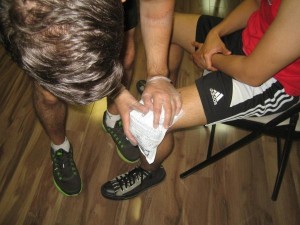A dislocated kneecap is a serious, sore injury that requires immediate medical care. The long-term consequences are not grim, but surpassing the initial phases can be an ordeal for any individual.
The kneecap (patella) rests in a groove at the base of the thighbone. It remains in this groove once the knee is bent and functions as a support for the quadriceps muscles that stabilize the leg once it is extended. Engaging in physical activities that involves the lower extremities requires a stable kneecap. It is good to note that in most cases, the kneecap returns to its groove spontaneously. Remember though that pain is still present and there is damage to the supporting structures, thus it is best to avoid walking or placing any weight on the affected limb.
How do I end up with a dislocated kneecap?
If the kneecap incompletely moves out of its spot, it is called a subluxation. Take note that a partly displaced kneecap can be due to a previous dislocation or genetic tendency for the kneecap to slide outside. In such cases, there might be tenderness below the kneecap and pain if the knee is twisted or climbing stairs. The feeling of instability is the usual complaint which is due to the inability of the ligaments and muscles to keep the patella in the femoral groove.
In case the kneecap moves out fully, usually to the exterior of the leg, it has been dislocated. This injury can occur from a direct blow to the knee, but more commonly caused by the twisting movement or changes in direction.
What are the indications of a dislocated kneecap?
- Intense pain and tenderness
- Immediate swelling in the affected kneecap

An ice pack can be applied for 15-20 minutes at 3-4 times throughout the day to minimize the swelling. - Evident displacement of the kneecap usually to the exterior of the knee joint
- Kneecap can be moved excessively from side to side
- Inability of the individual to straighten the leg
- Individual feels that he/she cannot support his/her weight
Initial treatment
If an individual is suspected with a dislocated kneecap, the initial measure to perform is to immobilize the knee using a splint with the affected limb in a straight position if possible and then seek medical care.
The doctor is capable of manually moving the kneecap back into its proper position when the leg is straightened. An ice pack can be applied for 15-20 minutes at 3-4 times throughout the day to minimize the swelling.
If the injury is not treated right away, the incidences become less tender and lead to less frailty but the destruction to the knee joint is still present until it is properly managed.
What is a dislocated knee?
If an individual has a dislocated knee, there is possible damage to the peroneal nerve and foot drop can occur. This injury makes running very difficult. Just remember that this is an uncommon injury but can occur in soccer or football players.

